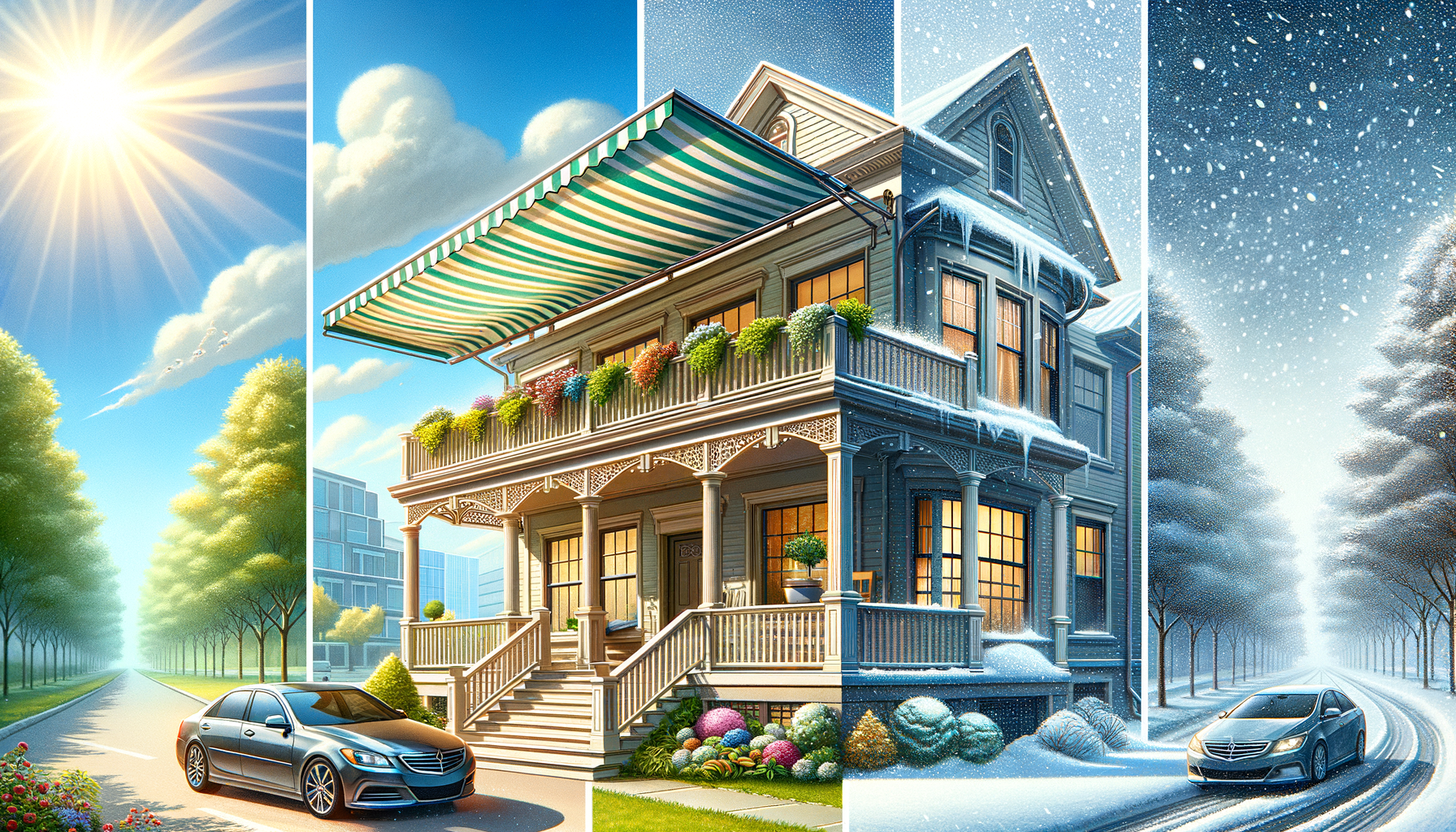Discovering the Multifaceted Benefits of Awnings & Overhangs
Awnings and overhangs do more than simply complement the architectural design; they serve as key elements that elevate the utility and visual appeal of structures.

Enhancing Aesthetic Appeal
Awnings and overhangs are not just functional additions to a building; they significantly enhance the aesthetic appeal of any structure. By offering a range of materials, colors, and designs, these architectural elements allow for creative expression and customization. An awning can transform a mundane façade into a vibrant and inviting space, drawing attention and adding character to commercial and residential buildings alike.
Consider the impact of a brightly colored fabric awning on a bustling street. It not only attracts potential customers but also contributes to the overall vibrancy of the neighborhood. Overhangs, on the other hand, offer a more permanent and sturdy solution, often crafted from materials like wood or metal, providing a sleek and modern look. When used creatively, they can highlight architectural features, create visual interest, and even serve as a focal point for the building’s exterior.
Moreover, the versatility of awnings and overhangs allows them to be tailored to various architectural styles, from classic Victorian to contemporary minimalism. This adaptability ensures that they can seamlessly integrate into any design concept, enhancing the overall aesthetic without overpowering the existing architecture.
Improving Energy Efficiency
One of the most significant benefits of awnings and overhangs is their ability to improve a building’s energy efficiency. By providing shade, they reduce the amount of direct sunlight entering a building, which can significantly lower indoor temperatures. This natural cooling effect reduces the reliance on air conditioning systems, leading to lower energy consumption and cost savings.
According to studies, awnings can reduce solar heat gain by up to 65% on south-facing windows and 77% on west-facing windows. This reduction not only makes indoor spaces more comfortable but also contributes to a building’s overall sustainability. Overhangs, when strategically placed, can also harness passive solar heating during cooler months by allowing low-angle winter sunlight to penetrate windows while blocking high-angle summer sun.
Furthermore, the use of energy-efficient materials in the construction of awnings and overhangs, such as reflective fabrics or insulated panels, can enhance their thermal performance. These materials help in maintaining a consistent indoor temperature, further reducing energy demands and promoting a more sustainable lifestyle.
Protecting Against Weather Elements
Awnings and overhangs serve as a protective barrier against various weather elements, extending the lifespan of a building’s exterior and enhancing the comfort of outdoor spaces. By shielding windows and doors from rain, snow, and harsh sunlight, they prevent damage and deterioration, reducing maintenance costs over time.
For instance, during heavy rainfalls, awnings can prevent water from seeping into doorways and windows, minimizing the risk of water damage and mold growth. In regions prone to snow, overhangs can prevent snow accumulation near entryways, reducing the risk of slipping hazards and making it easier to maintain walkways.
Moreover, by providing shade, awnings and overhangs protect outdoor furniture and flooring from fading and wear caused by UV exposure. This protection not only preserves the aesthetic appeal of outdoor spaces but also extends the usability of patios, decks, and balconies, making them more enjoyable throughout the year.
Increasing Usable Outdoor Space
Another compelling advantage of awnings and overhangs is their ability to increase the usable outdoor space of a property. By creating shaded areas, they allow homeowners and businesses to utilize outdoor spaces more effectively, transforming them into comfortable and functional areas for relaxation, dining, or social gatherings.
For residential properties, an awning over a patio or deck can create an inviting outdoor living area, perfect for entertaining guests or enjoying a quiet afternoon. In commercial settings, such as restaurants or cafes, overhangs can extend seating capacity by providing sheltered outdoor dining areas, attracting more customers and enhancing the dining experience.
Additionally, retractable awnings offer flexibility, allowing users to adjust the amount of coverage based on weather conditions or personal preference. This adaptability ensures that outdoor spaces remain versatile and usable throughout different seasons, maximizing the property’s potential.
Enhancing Property Value
Investing in awnings and overhangs can also have a positive impact on a property’s value. These features not only improve the aesthetic appeal and functionality of a building but also contribute to its overall marketability. Potential buyers or renters are often attracted to properties that offer enhanced outdoor living spaces, energy efficiency, and protection from the elements.
Moreover, the durability and low maintenance requirements of modern awnings and overhangs make them a cost-effective investment. Materials such as aluminum, treated fabrics, and composite panels are designed to withstand harsh weather conditions while retaining their appearance and functionality over time.
Ultimately, the addition of awnings and overhangs can set a property apart in a competitive real estate market, offering unique benefits that appeal to a wide range of buyers. Whether for residential or commercial purposes, these architectural elements provide a tangible return on investment by enhancing both the utility and appeal of a property.